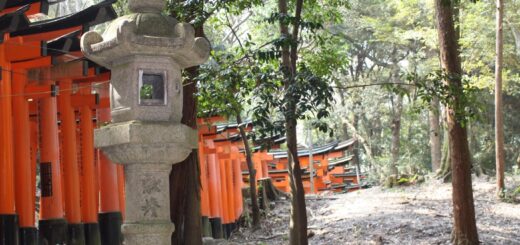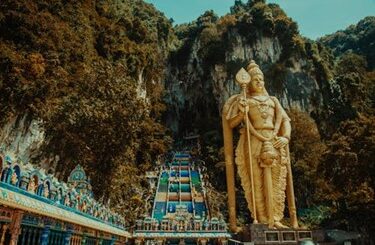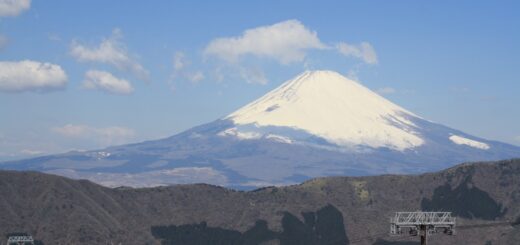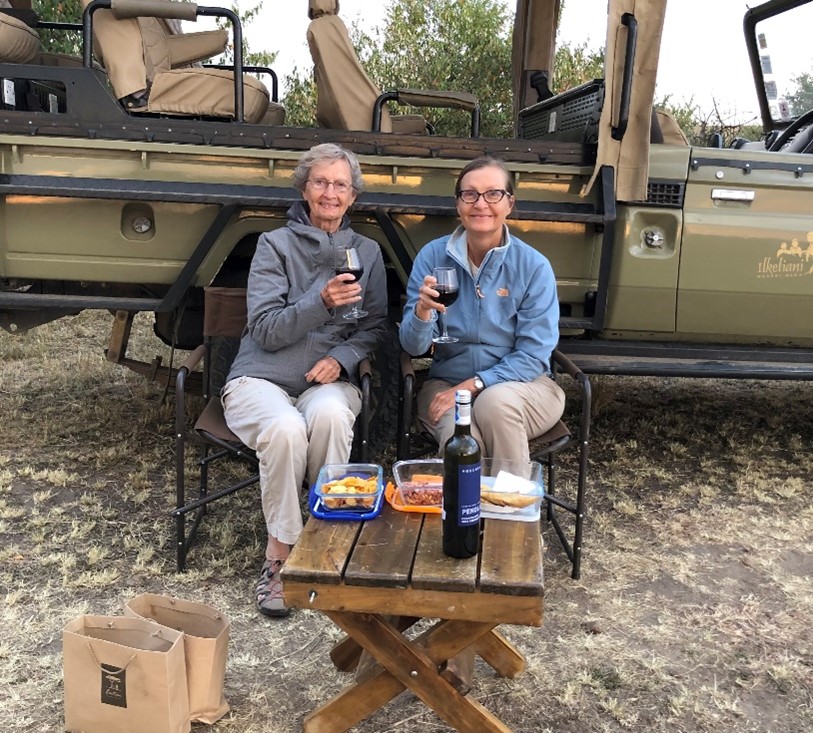Ho Chi Minh City
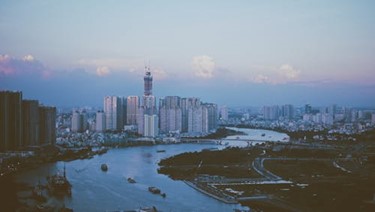
Travel Advice for Seniors: Ho Chi Minh City
We had long planned to go to Southeast Asia and particularly the countries of Vietnam, Cambodia, Laos and Thailand. We had spent a lot of time working on an itinerary that reflected our particular interests and were very excited to get started. For this trip we chose a private tour for just the two of us as there was a pretty big language barrier especially once you get off the routine tourist track.
There are plenty of group tours out there, but early on we decided if we were going to fly to the other side of the world, we needed to give ourselves enough time to truly enjoy exploring the culture and the sights, which is sometimes hard to do with even a small group. For this trip, the interaction and individual attention we received was well worth the extra expense.
We had planned for a 28-day trip, which actually turned into a 33-day trip due to airline technical difficulties with our tickets. That sort of made up for the fact that our luggage was lost for the first two weeks of the trip! After some serious persistence on the part of many people, it was finally located in South Korea and returned to us. Fortunately, our first stop, Vietnam, has many inexpensive tailoring shops. However, never forget to incorporate travel tip #1: Always pack a spare set of clothes in your backpack. Especially if you are traveling from a winter environment to a tropical environment, like we were!
Our first stop in Vietnam was in Ho Chi Minh City or Saigon. Depending on where you are in the country depends on what it is called. Hanoi is the capital of Vietnam, and it seemed much more rigid than most all of the southern cities that we visited.
Vietnam is itself a communist country, however, it’s sort of a capitalistic communism, or communism light. Outside of Hanoi, most of the people in the cities had businesses and seemed to be doing well. Hanoi looked a lot more spare and maybe not as well-kept. The people were even different, with the southern cities’ inhabitants being more laid back and entrepreneurial and Hanoi being a bit more nervous about saying the right thing, for lack of a better word. It was noticeable.
The country itself is very beautiful and even though the US fought long and hard there and is likely a bad memory for some, we found the people to be welcoming, and tourism was set up very well. Note: In Vietnam, they call the war the American War. Also, we excluded visiting some of the heavier war-related museums and sights, but others may find them interesting. In heavily touristed spots, there were English speaking people, but other than that, we relied on our guide and a few polite learned phrases.
Vietnam’s people dress modestly and are very polite. We found everyone we met to be very welcoming and there was very little said about the war, even at war sites. The people seemed to have prospered after the war and that tourist dollars seemed welcome. Modest apparel and “indoor” voices are appropriate as well as probably best keeping your thoughts about the Vietnam war to yourself. Also, please do learn a few words of Vietnamese. “Please” and “thank you” go a long way in a foreign country.
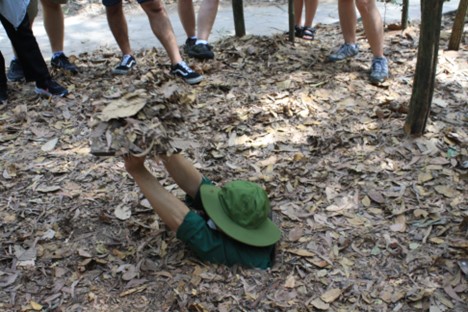
We landed in Ho Chi Minh City and hit the ground running since we had no luggage! The first tour was to Chu Chi tunnels. This is a preserved area of tunnels that shows how the North Vietnamese moved around underground during the war. While we didn’t go into the tunnels (they were very small) it was enough to look into several trap doors and see them. There were also samples of how they lived during this turbulent time in the way of small underground villages that were exposed above ground for us to see. A bit disconcerting, there was also a gun range here and semi-automatic weapons could be fired. It was a bit surreal hearing the gunfire in the background as the tour was operating, and it did make you think.The tunnels have accessible parking and entrance and some walkways, but several are narrow and have uneven surfaces.
Ho Chi Minh City, called then Saigon, was the stronghold of the democratic forces (South Korea/US supported) and Hanoi was the stronghold of the North Korean forces (Russian and China supported). The Chu Chi tunnels also had several Vietnamese citizens who had stepped on land mines after the war playing music for donations. The land mine situation continues to be a problem in Vietnam.
Following our tour to the tunnels, we checked into the hotel and immediately went to a market nearby to find some clothes. It was comical trying to find some pre-made clothes that fit, as Americans are much larger that the Vietnamese. We had some fun bartering for a pair of shorts, some underwear and a couple of shirts. Later we were able to find some laundry soap, so we were set for at least a few days. We also took a half day for mental health and found a very nice massage place nearby.
Second and the only full day we had here, was packed with highlights of the city: Notre Dame Cathedral, Central Post Office, Presidential Place in the morning, followed by a fantastic visit to the Jade Emperor Pagoda and Vietnamese History Museum.
Notre-Dame Cathedral Basilica of Saigon, officially, Cathedral Basilica of Our Lady of The Immaculate Conception, was built in the late 1800’s. You may wonder why a Cathedral is here…. but consider that Vietnam and a lot of this area was once French-Indochina. The French had it built for the colonists. Similarly, the Central Post office was also built by the French in the neo-classical style with some Asian touches. The Basilica has accessible parking, entrance, ramps, restroom and seating.
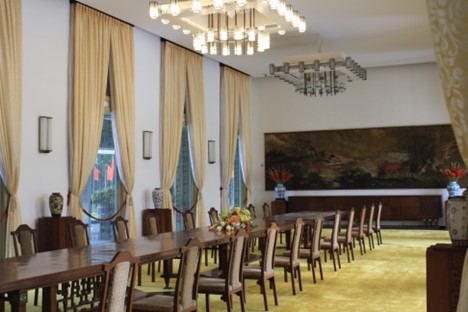
The Presidential Palace, known as the Independence Palace, was the office of the President of South Vietnam during the war. We took a walk through the Palace, which appeared to be as left as it was in 1975, when the North Korean army sent two tanks to take it. The living quarters are interesting to see as is the bunker below. Be respectful here by keeping voices low and dressing modestly. The palace has accessible parking, entrance, walkways and restrooms.
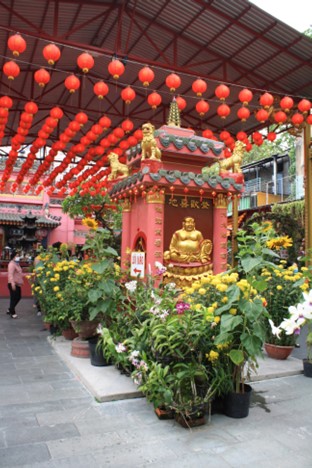
Jade Emperor Pagoda was built by a merchant in 1909 to honor the supreme Taoist god, the Jade Emperor or King of Heaven. It is s a festive, beautiful building and an appropriate introduction to the lavish temples in Vietnam, which differ here from other countries. It was interesting to us that there are so many different types of pagodas and temples that had several atypical interior, exterior stylings, not to mention are dedicated to several different religion and gods including Buddha. Several guides pointed out that it is typical that one building would serve for several different religious or local gods, sort of hedging one’s bets! Accessible parking and walkways.
A final stop was to the Vietnamese History Museum, a museum that featured many prehistoric items and through the various dynasties to current. Of special interest was the Champa display and the exhibits highlighting treasures from Vietnamese dynasties. Accessible parking, entrance, ramps, elevators and restrooms.
Our time in Saigon was too short, but we had to move on to Cambodia! We would’ve liked to explore the coffee culture and street food a bit more, but we had limited time. Good thing we were able to purchase some cooler clothes as it was 90 degrees when we arrived in Siem Reap!
Where we stayed: Libety Central Saigon Centre Hotel. Breakfast included. Nice hotel. Centrally located. Accessible parking, ramps, elevators, common areas and rooms.
How we got there: Flight from US to Ho Chi Minh City. This was part of a four-week private tour through Vietnam, Cambodia, Laos and Thailand.
General Accessibility Information: See notes above. Vietnam has made strides in accessibility, though some challenges remain. Ho Chi Minh City has flat terrain and have accessible tours, sights, transport and hotels. Call in advance to verify and make specialty arrangements.See our sections on specialty apps and accessible travel for more on accessibility assistance.

